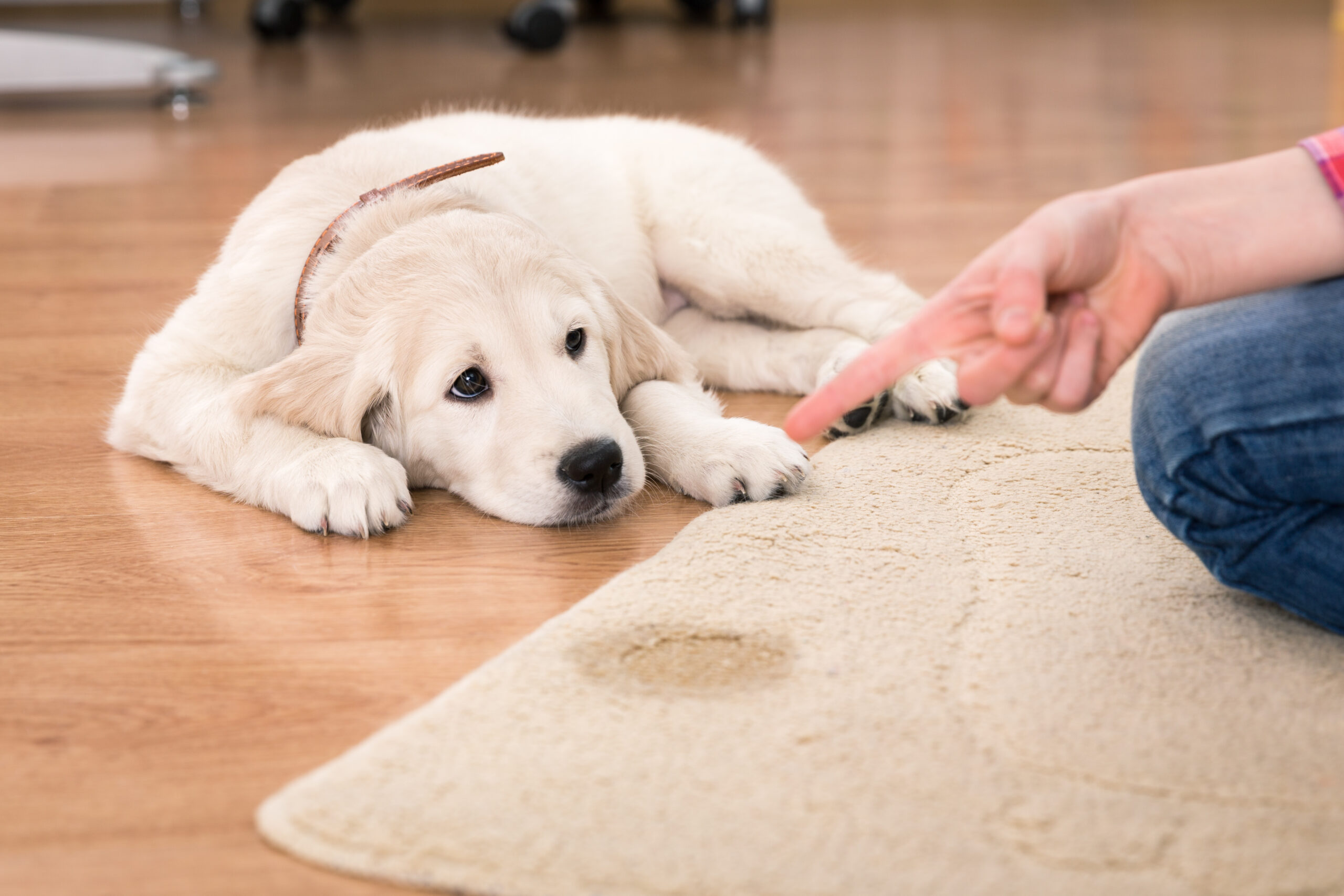-By Dr Graham Swinney
When your dog starts to have urinary accidents in the house it can be very difficult to know what is causing it. There are a number of potential causes for signs such as these, and the management of such conditions can be very different. Could there be a urinary tract infection causing increased urgency to urinate? Could there be an underlying disease causing increased urine production or thirst that means they are just getting caught short and end up urinating inside the house? It could also be that it is winter and they have arthritis and sore joints, and it just makes them uncomfortable to get outside to go and urinate on the lawn. It is also possible that they have developed urinary incontinence (for which there are a number of potential causes), and cannot fully control their urination.

The first step to undertake in a setting such as this is to go and see your Vet. Make sure you have the right Pet Insurance for your dog, so you are prepared to cover things like this. There are a number of questions they will likely ask you, so it is good to be prepared with some information – these may include
- Has there been any change in your dog’s water consumption?
- Have you noticed any change in their urination habits such as urgency to urinate, frequent urination, straining etc?
- Have you noticed any blood in their urine?
- Is the urine just in their bed or where they sleep, or other places in the house?
Your Vet will undertake an examination of your pet to look for any abnormalities that could provide an explanation for the clinical signs. This may include an assessment of their nervous system as well. In some cases a cause may be obvious from the examination alone, but it is more common that your Vet will need to collect some samples from your dog to try and make a more precise diagnosis.
These samples may include
- A urine sample. The initial test undertaken is what is called a urinalysis, and there are a number of parts to this examination
- The colour and clarity of the urine will be checked. The urine concentration will also be checked – this can provide information when the urine is consistently dilute as it suggests an underlying illness.
- A chemical analysis using a dipstick will be undertaken. This can look for things like glucose (if increased it suggests diabetes), protein, blood etc that can provide important information on a potential cause of the urination in the house.
- A sediment analysis looking for white blood cells or bacteria that may suggest an infection, crystals that could raise concerns of a stone, red blood cells that suggest bladder irritation.
- Blood tests
- A Complete Blood Count looks at the cells in the blood and may give signs of anaemia or inflammation suggesting underlying disease
- A Blood Chemistry Profile that will look for potential underlying causes of increased urination and thirst, and will assess kidney and liver health, blood glucose, blood electrolytes and protein levels and more.

The results obtained on these tests may provide an answer as to the cause of the problem urination. If not, there may be some extra tests your Vet will suggest, or extra tests to give more precise information obtained on the more routine tests. These could include
- A urine culture if there was a suspicion of infection based on the urine tests
- An extra blood test called IDEXX SDMA which can detect kidney disease earlier than the routine tests
- Imaging studies such as radiographs (x-rays) or an ultrasound.
About the author

